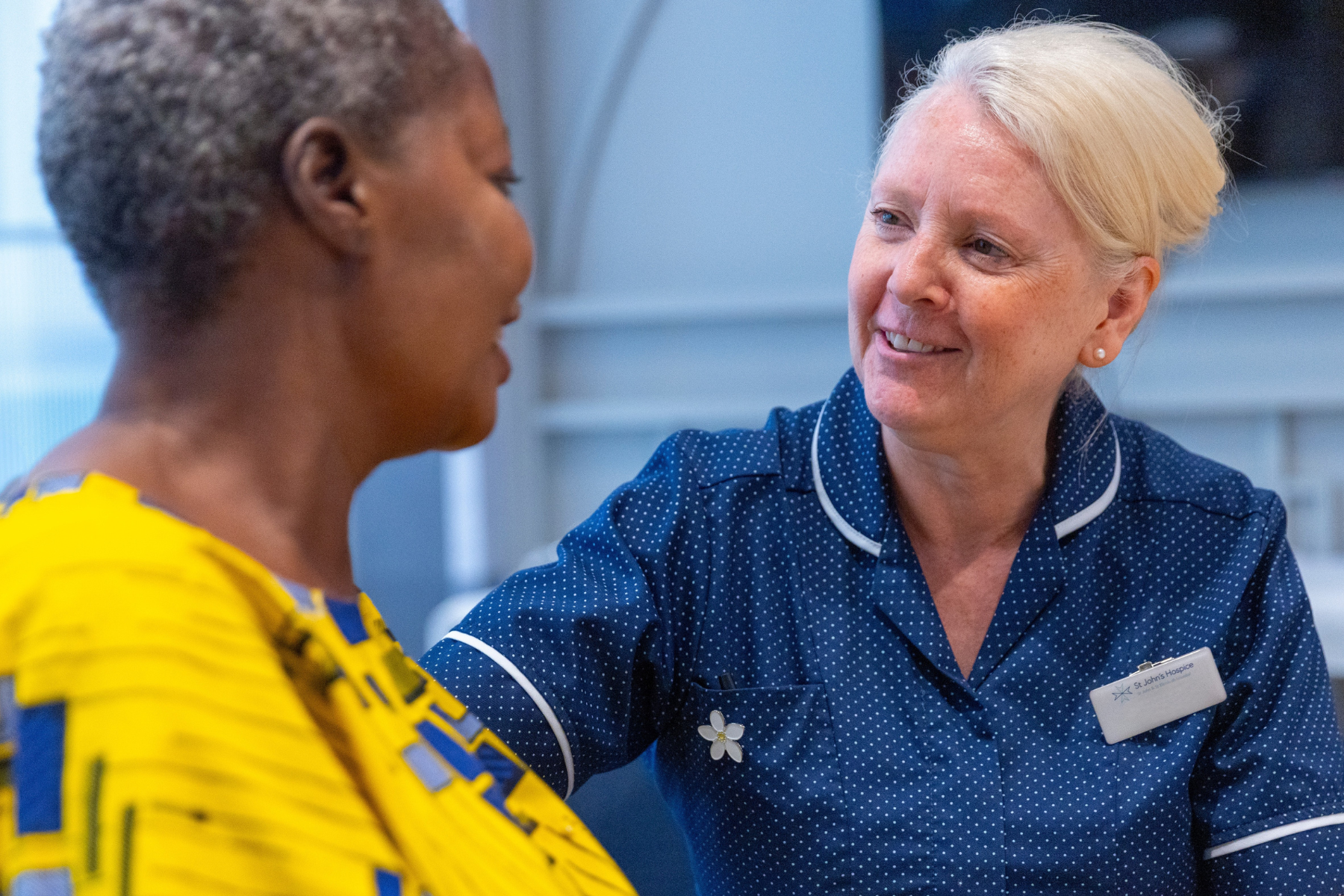Reiki – Balancing the body
Here at St John’s Hospice, we pride ourselves on giving our patients the best holistic care available. This includes a number of complementary therapies that can greatly help someone with a life-limiting illness.
One such complementary therapy we offer our patients is Reiki. Reiki is a form of energy healing which originates from Japan and is said to be able to help reduce pain and bring a sense of calm to those who are experiencing stress for a variety of reasons. Our Hospice Reiki therapist Julia Dunn has been working for the Hospice for nearly 20 years and was the person responsible for introducing the practice to our Hospice. Here Julia tells us the benefits of Reiki for our patients.
It’s all about balance
Reiki is a treatment working with the energies of the body. As with acupuncture which works with the meridians running throughout the body, Reiki works with the energy centres running down the midline of the body.
We’re not curing, we’re just trying to balance the body. So, if we’re stressed, we’re out of balance. As most people are stressed most of the time, our bodies are continually out of balance. We have two sides to our brain and each one serves a different purpose. What we want to do is bring the two together, so everything works fluidly. So we’re balancing that as well as the upper and lower areas of the body.
Getting rid of stress
What we find with patients in the daycare centre is people come in and they are generally stressed because they are ill and worried. In balancing that, it’s very calming. After a session I’m often told, “I feel so relaxed, I feel so much calmer.” Often the next time I see a person after a session they tell me how well they slept that night.
During a treatment, I place my hands on or around an energy centre. I then hold that position until that area is brought into stasis, this generally feels like a sigh of relief as things come into balance. I then move on to the next area. That’s a basic idea of how reiki works.
A chance to talk
I usually see people a few times and have regulars who come in. I then see them over several weeks. Most people say when they have complementary therapies they feel calmer. It also helps their outlook on life and their sense of wellness. The other idea is that because people are relaxed, and we seem less medical perhaps, that they can talk to us unofficially. Things come out that they’d never thought to discuss with the nurses and medical team in the Hospice. When we hear this we can feed this back to the team to make sure they’re aware of everything that’s going on. It’s all done with the client’s knowledge of course. It gives them permission to say something that they often say they didn’t want to bother the staff with.
A human touch
A lot of people at the Hospice are never touched physically. They might go week to week without having physical contact with people. That human touch can be so important for a person. It opens them up to a level of understanding about their body and what they’re experiencing. Especially people who are here over a long period of time. Indeed, recent studies suggest that loneliness increases mortality by 26%.
Give it a go
I remember there was one woman who was terminally ill and the Hospice was worried she was quite closed off and isolated and wanted to try to open her up a bit. So I went to where she lived, which was one room – she slept, ate and cooked in that room. So with the best will, she couldn’t do very much. She was hesitant at first but let me treat her nonetheless. The next week the Hospice asked if I could go back to her because she’d told them that she really enjoyed it. So I went back and she said, “I felt amazing afterwards, I felt different”. I gave her three treatments and then she allowed herself to come into the Hospice for respite. I came to see her a couple of times when she was here and she was like a different person. She was chatty, and welcoming, and wanted to hold my hand.
Now people are more open to trying it. I always have a queue of people as once the patient has experienced it, word gets around and they’ll say, “oh you should try it, you’ll really like it”. You start to build a list of clients here.
Complementary Therapies are just one of a number of ways we provide our patients with free palliative care. The only way we are able to do this is through generous donations. If you’d like to donate to our Hospice please click here – Thank You.





